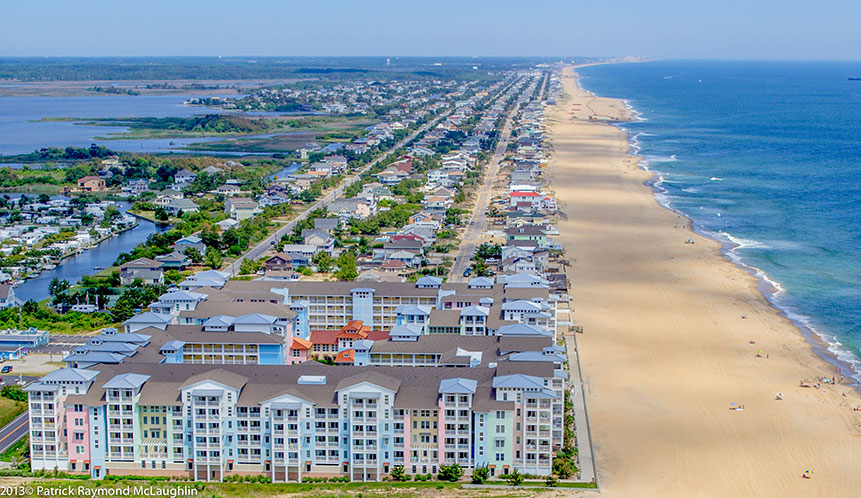
Virginia is fortunate to have thousands of square miles of water and coastline. However, waterfront property is not unlimited. It is also in great demand because people value waterfront access rights and the pristine views that come with it. Waterfront property with a pier or dock brings great joy to the family that enjoys recreational boating.
Virginians who own residential or commercial waterfront property worked hard and paid a premium for that bundle of property rights known as “riparian” property rights. Indeed, the Virginia Supreme Court in 2012 wrote that the “riparian nature” of waterfront property “is often a substantial, if not the greatest, element of its value.” Studies show that buyers pay approximately 45% extra for oceanfront property, with lake and riverfront properties commanding a premium of about 25%. Although people could save a lot of money by purchasing that non-waterfront property across the street, they pay the higher price because they want the land plus the riparian property rights. These riparian property rights are a package of the following five specific benefits available to waterfront property owners under Virginia law.
1. The Right to Enjoy The Natural Advantages Conferred Upon The Land By Its Adjacency to The Water
Our clients often tell us that the view of the water, as seen from their waterfront property, is one of the greatest natural advantages that comes with owning waterfront property. Waterfront property owners also attach great importance to recreational amenities, such as swimming, fishing and boating. We also routinely advise our clients on whether they can stop others from swimming, fishing and boating in the water next to your waterfront property. The answer depends on whether the property is on a lake, pond, creek, river, bay or seashore. The answer depends also on ownership of the land beneath the waterbody (i.e. the subaqueous bottom or bottomland).
2. The Right Of Access to The Water
Riparian property rights protect the waterfront property owner’s ability to operate a boat at the property by providing him or her a right of access to the water. This right specifically includes a right of way to and from the navigable part of the waterway. Having access from the shore to the line of navigation is an important part of riparian property rights
3. The Right to Build a Pier or Dock Out to The Navigable Part of The Water
Riparian property rights also protect the waterfront property owner’s ability to operate a boat by providing him or her the right to build a pier or dock. This is important to the waterfront property owner because oftentimes the water closest to the shore is too shallow for a boat. The waterfront property owner overcomes this problem by “piering out” to the deep water. Once the pier or dock is built from the shore out to the deep water, the waterfront property owner can tie up his or her boat at the pier or dock without ever having to operate the boat in any water other than deep water, and then conveniently walk from the boat to the waterfront property.
4. The Right For the Size of Your Property to Expand Through a Natural Process Known as Accretion
The waterfront property owner owns land with fixed boundaries as to the upland or “fast” land. The waterfront boundary at the shoreline is quite different. It shifts under the influence of the water which can deposit extra soil along the shoreline in a process known as accretion. When this happens, the size of the waterfront property grows larger. Conversely, the influence of the water can remove shoreline soil in a process known as erosion, resulting in a reduction in the size of the waterfront property. Sea level rise is another factor that can shrink the size of waterfront property. The one thing we know for sure is that water is dynamic and the property boundary of a waterfront property changes over time as the shoreline changes. Waterfront property owners typically want to install a bulkhead, revetment or other defensive structure to guard against erosion of their shoreline. Virginia’s new “living shoreline” law (took effect July 2020) discourages these strategies in favor of living shorelines.
5. The Right to Make a Reasonable Use of The Water as It Flows Past or Washes Up on the Land
During earlier times in Virginia a riparian owner would use flowing water in a river as an energy source to drive a water wheel that operated a sawmill or a gristmill. Today, water might be withdrawn from a river or stream to irrigate crops or to water cattle. Another modern example is an electric power generating plant, built next to a river, that withdraws river water to cool equipment inside the plant and returns the water (after it has been heated) to the river. The withdrawal of surface water may require a Virginia Water Protection permit from the Virginia Department of Environmental Quality. As you can imagine, the rules built around riparian rights can be complicated, especially with respect to Common Interest Community Associations on the water. Associations with property on the water can be significantly affected by these laws. Owners must also consult the Association’s Governing Instruments to determine what rules, regulations and restrictions exist with respect to the water around the property. On numerous occasions our waterfront property law attorneys and our common interest community law attorneys have been asked to help a waterfront property owner who discovered only after purchasing a nice piece of waterfront property that the riparian property rights are owned by someone else or that he/she could not build the pier they wished to build. Finding that you are unable to build a dock for your boat is bad enough but what makes it worse is that the standard forms of title insurance typically provide no coverage for this type of problem. We recommend consulting a waterfront property law attorney when considering the purchase of waterfront property.
Jeffrey A. Hunn, Esquire is a Shareholder with the law firm of Pender & Coward, P.C. He is a member of the Community Association Practice Group and concentrates his practice in the areas of Community Association Law. Jeff is an active board member of the Southeastern Virginia Chapter of the Community Associations Institute (SEVA-CAI).
Jim Lang is a Pender & Coward shareholder and former COO of the firm. He focuses his practice on protecting Virginians who live, work and play on the water, especially in proceedings before the Virginia Marine Resources Commission (VMRC). Before joining the firm in 2005, Jim completed a 25-year career in the U.S. Navy.
